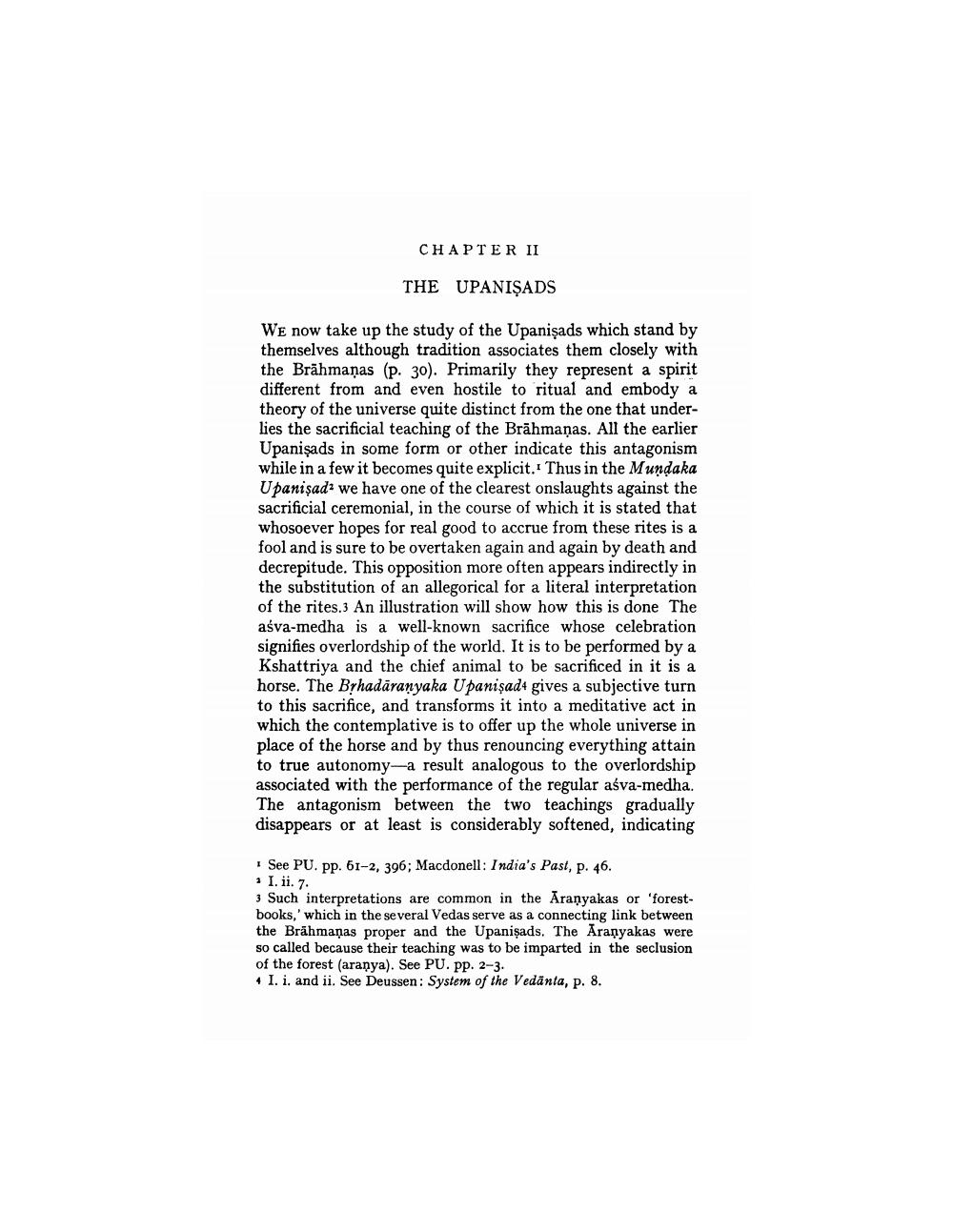________________
CHAPTER II
THE UPANIŞADS
We now take up the study of the Upanisads which stand by themselves although tradition associates them closely with the Brāhmaṇas (p. 30). Primarily they represent a spirit different from and even hostile to ritual and embody a theory of the universe quite distinct from the one that underlies the sacrificial teaching of the Brāhmaṇas. All the earlier Upanişads in some form or other indicate this antagonism while in a few it becomes quite explicit.. Thus in the Mundaka Upanisad: we have one of the clearest onslaughts against the sacrificial ceremonial, in the course of which it is stated that whosoever hopes for real good to accrue from these rites is a fool and is sure to be overtaken again and again by death and decrepitude. This opposition more often appears indirectly in the substitution of an allegorical for a literal interpretation of the rites.3 An illustration will show how this is done The aśva-medha is a well-known sacrifice whose celebration signifies overlordship of the world. It is to be performed by a Kshattriya and the chief animal to be sacrificed in it is a horse. The Brhadaranyaka Upanişadt gives a subjective turn to this sacrifice, and transforms it into a meditative act in which the contemplative is to offer up the whole universe in place of the horse and by thus renouncing everything attain to true autonomy-a result analogous to the overlordship associated with the performance of the regular aśva-medha. The antagonism between the two teachings gradually disappears or at least is considerably softened, indicating
+ See PU. pp. 61-2, 396; Macdonell: India's Past, p. 46. 1 I. ii. 7. 3 Such interpretations are common in the Aranyakas or 'forestbooks,' which in the several Vedas serve as a connecting link between the Brāhmaṇas proper and the Upanişads. The Aranyakas were so called because their teaching was to be imparted in the seclusion of the forest (aranya). See PU. Pp. 2–3. * I. i. and ii. See Deussen: System of the Vedänta, p. 8.




